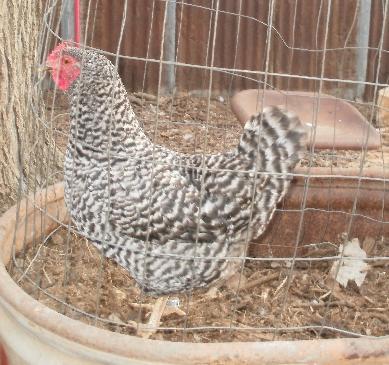English grammar is a tool improperly used as a weapon by me. Sorry.
To clarify, I want to develop longer tails (and wings) but intermediate steps in that direction will likely result in the "smutty" appearance of bars on males where transition between dark and light areas will not be sharp. I would like contrast of existing birds maintained but suspect some sort of pigmentation intensifier allele will be needed to compensate for increased feather growth rate.
To my eye, the ample tail desired on dom by many looks like a bunch noodles with minimal flight worthiness. Too many sicle feathers that transition smoothly from saddle feathers.
I very much agree outside influence may be required. Presently dom x game hybrids being generated to replace slow feathering genes in one of my dom lines. Dom line in use has at least two loci involving slow feathering genes. One loci is on Z (male) chromosome and another is autosomal. The former I think is derived from barred rock influence for promoting barring and possibly feather sexing of hatchery stocks. The other appears present in all dom lines I have. Other slow feathering loci can not be ruled out at this time. Developing a fast feathering dom line will result in something that may resemble a rose combed California grey.
Images I refer to are from Mark Feild's book and website.
To clarify, I want to develop longer tails (and wings) but intermediate steps in that direction will likely result in the "smutty" appearance of bars on males where transition between dark and light areas will not be sharp. I would like contrast of existing birds maintained but suspect some sort of pigmentation intensifier allele will be needed to compensate for increased feather growth rate.
To my eye, the ample tail desired on dom by many looks like a bunch noodles with minimal flight worthiness. Too many sicle feathers that transition smoothly from saddle feathers.
I very much agree outside influence may be required. Presently dom x game hybrids being generated to replace slow feathering genes in one of my dom lines. Dom line in use has at least two loci involving slow feathering genes. One loci is on Z (male) chromosome and another is autosomal. The former I think is derived from barred rock influence for promoting barring and possibly feather sexing of hatchery stocks. The other appears present in all dom lines I have. Other slow feathering loci can not be ruled out at this time. Developing a fast feathering dom line will result in something that may resemble a rose combed California grey.
Images I refer to are from Mark Feild's book and website.
Last edited:








